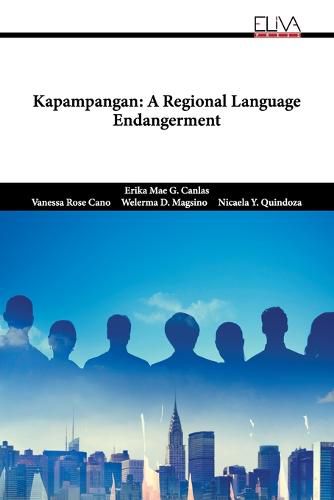Readings Newsletter
Become a Readings Member to make your shopping experience even easier.
Sign in or sign up for free!
You’re not far away from qualifying for FREE standard shipping within Australia
You’ve qualified for FREE standard shipping within Australia
The cart is loading…






"Kapampangans are killing Kapampangans. Not by guns nor swords, nor weapons of any kind... but by linguicide."- Kevin Montalbo This book mainly tackles the endangerment of Kapampangan as one of the regional languages in the Philippines. Indung Kapampangan is home to the Austronesian language known as the Kapampangan. The Philippines' northern island of Luzon is where the homeland of the Kapampangan is situated. Its center is the province of Pampanga, which encompasses Bulacan, Bataan, Nueva Ecija, and the southern portion of Tarlac. Since approximately 2 million people speak Kapampangan, the language does not initially appear to be in danger. However, a language's population alone cannot determine if it is endangered. Studying its in-depth factors, the Kapampangan language is gradually being forgotten as a mother tongue, is dying, and is in terminal decline, particularly in highly urbanized cities of Pampanga. The primary goal of this paper is to determine the factors contributing to the endangerment of the language, specifically to the Junior High School students at Systems Plus College Foundation. The respondents' demographic profiles (age, city/municipality, and family status quo), as well as the nine predicting factors (Intergenerational Language transmission, Absolute numbers of speakers, Proportion of speakers within the total population, Loss of existing language domains, Response to new domains and media, Accessibility of written materials for language education and literacy, Governmental and institutional language attitudes and policies, Community members attitude towards their own language, and Amount and quality of documentation), were observed.
$9.00 standard shipping within Australia
FREE standard shipping within Australia for orders over $100.00
Express & International shipping calculated at checkout
"Kapampangans are killing Kapampangans. Not by guns nor swords, nor weapons of any kind... but by linguicide."- Kevin Montalbo This book mainly tackles the endangerment of Kapampangan as one of the regional languages in the Philippines. Indung Kapampangan is home to the Austronesian language known as the Kapampangan. The Philippines' northern island of Luzon is where the homeland of the Kapampangan is situated. Its center is the province of Pampanga, which encompasses Bulacan, Bataan, Nueva Ecija, and the southern portion of Tarlac. Since approximately 2 million people speak Kapampangan, the language does not initially appear to be in danger. However, a language's population alone cannot determine if it is endangered. Studying its in-depth factors, the Kapampangan language is gradually being forgotten as a mother tongue, is dying, and is in terminal decline, particularly in highly urbanized cities of Pampanga. The primary goal of this paper is to determine the factors contributing to the endangerment of the language, specifically to the Junior High School students at Systems Plus College Foundation. The respondents' demographic profiles (age, city/municipality, and family status quo), as well as the nine predicting factors (Intergenerational Language transmission, Absolute numbers of speakers, Proportion of speakers within the total population, Loss of existing language domains, Response to new domains and media, Accessibility of written materials for language education and literacy, Governmental and institutional language attitudes and policies, Community members attitude towards their own language, and Amount and quality of documentation), were observed.